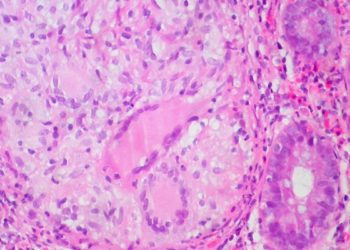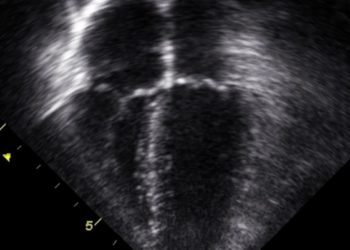2 Minute Medicine Rewind December 2, 2024
1. More physical activity and reduced sedentary behaviour shows significantly reduced odds ratios of developing CKD
2. The systemic immune inflammation index (SII) and neutrophil-to-lymphocyte ratio (NLR) were significantly increased in CKD and can be used prognostically and as novel biomarkers for CKD occurence
Evidence Rating Level: 2 (Good)
The level of physical activity (PA) and sedentary behaviour (SB) has major effects across the spectrum of kidney diseases including chronic kidney disease (CKD). The suspected mechanism is due to the immune regulatory effect of PA. Systemic inflammation causes renal inflammation, a crucial factor in the onset and advancement of CKD. This study aimed to identify a relationship between PA and SB and CKD using cross-sectional data from the National Health and Nutrition Examination Survey (NHANES) 2007–2018. Physical activity was measured using the Compendium of Physical Activities, a widely accepted method of converting physical activities to their respective energy cost. CKD was measured using creatinine and eGFR. Inflammation was measured using various indices including systemic immune inflammation index (SII), neutrophil-to-lymphocyte ratio (NLR) and platelet-to-lymphocyte ratio (PLR). Active individuals had a significantly reduced odds ratio of developing CKD (OR=0.80, 95% CI: 0.69 to 0.92, p=0.002). Every 30 minutes of moderate-to-vigorous PA (MVPA) was associated with 2% lower odds ratio of CKD (OR=0.98, 95% CI: 0.96 to 1.00, p=0.027). Similarly, SB increased the odds ratio of developing CKD by 39% (OR=1.39, 95% CI: 1.22 to 1.58, p<0.001) and for every 30 minute of SB there was a 3% higher odds ratio of CKD (1.03, 95% CI: 1.02 to 1.04, p<0.001). Both NLR and SII were significantly associated with CKD and showed an increase of 7.77% (OR=1.0777, 95% CI: 1.0294 to 1.1281, p=0.002) and 0.01% (OR=1.0001, 95% CI: 1.0000 to 1.0003, p=0.042) higher ORs of CKD, respectively. Therefore, by increasing PA and reducing SB, rates of CKD could be reduced. NLR and SII could be used not just as prognostic indicators but also as potential markers for CKD occurrence.
1. CRP-point-of-care tests can be used to guide antibiotic prescribing in primary care for patients with acute exacerbations of COPD with no reduction in patient outcome
Evidence Rating Level: 1 (Excellent)
About 80% of patients presenting with acute exacerbations of chronic obstructive pulmonary disease (AECOPD) to primary care are often given antibiotics that confer no benefits, waste resources, promote antibiotic resistance, and can harm patients. Antibiotic prescription for AECOPD patients is typically decided based on clinical features alone. This study aimed to assess the effect of a C-reactive protein (CRP) point-of-care test (POCT to guide antibiotic prescribing in primary care. The study used the individually randomized and controlled PACE trial in the UK which assigned 324 and 325 participants to receive usual-care or CRP-guided care respectively. The primary outcomes were patient-reported antibiotic consumption for AECOPD within 4 weeks post-randomization and COPD health status assessed by the Clinical COPD Questionnaire (CCQ) at 2 weeks post-randomization. Additionally, the economic burden of each treatment arm was analyzed. In the CRP-guided group, 47.7% of patients were given antibiotics after testing compared to 69.4% in the usual-care group with the most common antibiotics being amoxicillin (59.5%), doxycycline (24.0%) and clarithromycin (12.8%). Interestingly, the participants who received antibiotics in the CRP-guided group received 0.21 more prescriptions on average and more expensive antibiotic formulations. Comparing oral corticosteroids and inhaled medications showed no difference between the groups. Total COPD-related healthcare costs were not significant between groups (p = 0.505). Clinical outcomes showed no difference in QALYs gained over the 6-month treatment period. The odds of consuming an antibiotic for AECOPD was 69% lower in the CRP-guided group compared to usual care (adjusted OR=0.31; 95% CI 0.20 to 0.47; p<0.001). Therefore, CRP-POCT is a cost-effective intervention to reduce antibiotic prescriptions for patients with AECOPD.
1. Each one-unit increase in NHHR was associated with an overall increase in DKD prevalence of 6%
Evidence Rating Level: 2 (Good)
A significant indicator of atherosclerosis is the Non-High-Density Lipoprotein Cholesterol to High-Density Lipoprotein Cholesterol Ratio (NHHR) and is used in monitoring diabetes. One major complication of diabetes is diabetic kidney disease (DKD). The relationship between NHHR and DKD is unclear. This study aims to identify a relationship between NHHR and DKD in adults in the U.S. 8,329 diabetic participants were included in the analysis. Covariates were assessed using the NHANES questionnaires. Diabetic individuals were categorized as either DKD or non-DKD groups based on diagnostic criteria for DKD. After adjusting for variables, there was a positive correlation between NHHR and DKD. Each one-unit increase in NHHR was associated with a 22% increase in DKD prevalence (95% CI: 1.06, 1.40, P = 0.004). Quartiles of NHHR confirmed this with a positive trend (p < 0.001). A smooth curve fit showed a J-shaped relationship between NHHR and DKD prevalence showing a less pronounced relationship until NHHR score hit 1.75 at which point every unit increase in NHHR increased the risk of DKD by 7%. A subgroup analysis showed this relationship remained within most subpopulations. The greatest association was in subpopulations without coronary heart disease and those that did not currently smoke. Therefore, there are significant differences in NHHR in DKD and non-DKD populations. Each one-unit increase in NHHR was associated with an overall increase in DKD prevalence of 6% (95% CI: 1.03–1.09, P < 0.001). The cross-sectional nature of the study design makes finding a causal relationship impossible and can limit the generalizability of the findings.
1. BMD may differ on paretic and nonparetic sides in stroke patients with a history of falling and balance deficits
Evidence Rating Level: 2 (Good)
There is an increased risk of fracture due to poststroke osteoporosis. These injuries particularly affect the hip. However, current recommendations rarely recommend bone mineral density (BMD) measurements as a follow-up in the management of this patient population. This cross-sectional study aimed to compare the femoral hip BMD between the “fallers” and “nonfallers” in stroke patients. BMD was measured at the femoral neck using dual-energy x-ray absorptiometry. Additionally, the study aimed to identify any differences in balance (Berg balance scale (BBS)), mobility, fear of falling (falls efficacy scale-international (FES-I)), and exploring discrepancies between paretic and noparetic sides within each group. Of the 44 enrolled patients, 22 reported falling. No significant difference was seen between BMD in paretic femoral neck, nonparetic femoral neck, and lumbar spine between the fallers and nonfallers (p = .504, p = .197, p = .667, respectively). T-scores followed a similar trend (p = .457, p = .194, p = .693, respectively). Additionally, there was a significant difference between the BMD and T-score bilaterally in fallers (p = .007, 95% CI −0.06 to −0.01; p = .006, 95% CI −0.51 to −0.09) but not in nonfallers. Balance (BBS) was significantly lower in fallers (p = .033, 95% confidence interval [CI] 0.17–19.05). Fear of falling (FES-I) was significantly higher in fallers as well (p = .001, 95% CI −22.40 to −6.50).
Temporal Dynamics of Plasma Neurofilament Light in Blood Donors With Preclinical Multiple Sclerosis
1. Multiple sclerosis patients can sustain axonal injury up to 9 years before symptom onset
2. Until symptom onset, physical and mental well-being are comparable between affected and unaffected individuals
Evidence Rating Level: 3 (Average)
Multiple sclerosis (MS) has an unclear mechanism and onset with physiological changes occurring well before symptom onset. A prodromal phase of MS has been described and includes inflammatory activity, fatigue, cognitive impairment, depression, and increased utilization of healthcare resources. One method of monitoring MS disease activity is neurofilament light chain (NfL) which is a component of the neuroaxonal skeleton. NfL levels have been shown to be increased in patients up to 10 years before symptom onset. However, no study has shown if the level of NfL reflects the time to symptom onset in patients. This study aimed to investigate the intraindividual NfL dynamics in the presymptomatic phase of MS. Plasma samples from blood donors who were subsequently diagnosed with MS were analyzed. 64 donors developed MS and were compared to 138 healthy donors. A highly significant, positive, linear association between log(NfL) and age (p = 0.0001), indicating that NfL increased by 1.4% (95% CI 1.0%–2.1%) with each additional year of age. Storage time showed a 0.3% reduction in NfL with each year of storage (95% CI 0.1%–0.5%). Intraindividual analysis showed most of the presymptomatic MS donors had low baseline NfL levels comparable to healthy donors. Increased NfL levels were seen up to 9 years before initial demyelinating symptoms. Bayesian analysis showed a higher proportion of extreme NfL values in presymptomatic MS group compared to the healthy group. All groups (healthy, MS-no NfL change, and MS-elevated NfL) reported equally high physical and mental well-being before symptom onset. Unfortunately, there was inadequate sample frequency to identify intraindividual trends in NfL before symptom onset which should be elucidated as it can provide prognostic information and could identify a therapeutic window.
Image: PD
©2024 2 Minute Medicine, Inc. All rights reserved. No works may be reproduced without expressed written consent from 2 Minute Medicine, Inc. Inquire about licensing here. No article should be construed as medical advice and is not intended as such by the authors or by 2 Minute Medicine, Inc.







